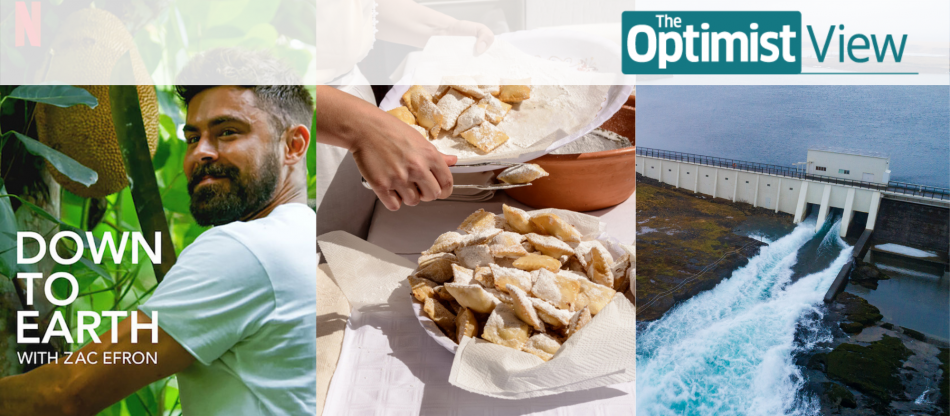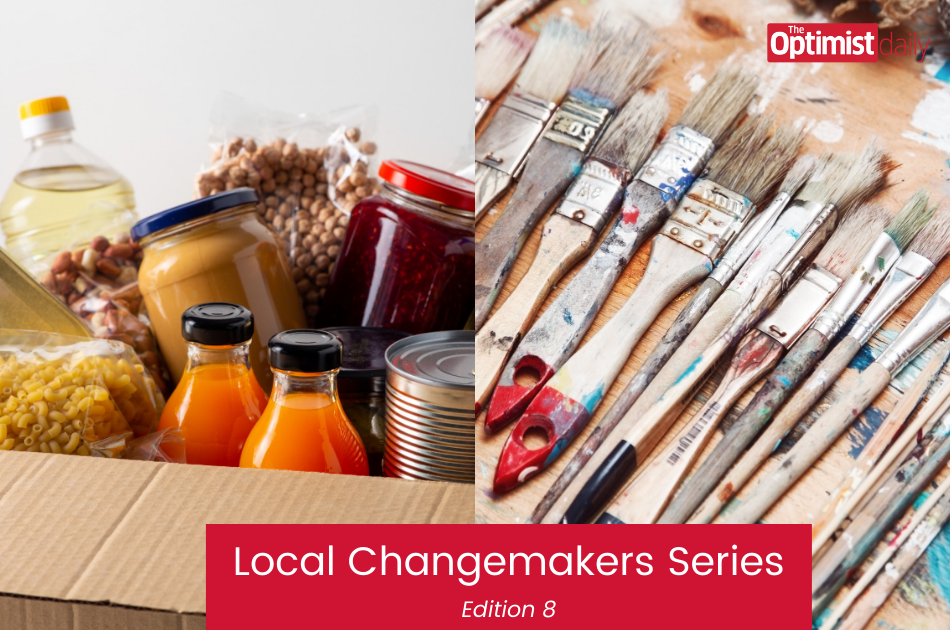“Long-term survival on this planet for us and for all generations after us is a pretty good idea. Remember, the earth will probably always be here. We just may not be able to live on it for too long.” – Zac Efron
BY Amelia Buckley and Arielle Tiango
Little was known about the world of chimpanzees before Jane Goodall began her legendary work in Gombe in 1960. Goodall discovered not only that chimps are not vegetarians, as previously thought, but also that like humans, chimpanzees use tools to find their food and exhibit many emotions we would recognize as expressly human. Her research taught us that we are not as separate from the animal kingdom as we might thinnk and sculpted a whole generation of young conservationists. Although her writing is extraordinary, what allowed Goodall’s work to be so widely shared with the public was her first film: My Life with the Chimpanzees.
The world through film
Film is a powerful medium, especially for sharing science and innovation with the greater public. The same awe and wonder that viewers experienced in Goodall’s film can be seen time and time again in works like March of the Penguins, Planet Earth, and My Octopus Teacher. Today, at a time when the cinematic experience more commonly takes the form of docu-series, a surprising host takes us on yet another journey of learning around the globe.
When we all first heard that Zac Efron, star of teen rom coms and corny beach flicks, was moving into documentary creation, more than a few eyebrows were raised. The heartthrob has surprised us all and after his Emmy win this week for ‘outstanding-daytime-program host’, we figured it was time to talk about the value of television and other creative storytelling methods as solutions journalism mediums.
First and foremost, we must warn you that after months (or years) of quarantine, Efron’s series, Down to Earth, will give you a strong case of the travel bug. However, his exploration with co-host Darin Olien isn’t your usual travel piece. The pair choose to explore different locations in search of, in their own words, “healthy sustainable living solutions for the planet and all who live on it.”
Iceland and Renewable Energy
Efron and Olien’s journey starts with one of our favorite subjects: green energy. Did you know that 100 percent of Iceland’s energy comes from renewable sources? That’s pretty impressive, but it wasn’t always that way. As recently as the 1970s, Iceland was dependent on foreign coal imports for much of their electricity, but that all changed when they decided to harness the power of hydro and geothermal energy.
Today, they actually use the force of the island’s volcanoes and waterfalls to power their industries and homes. In a geothermal power plant on the country’s southern coast, 64 bore holes deep in the ground capture volcanic steam which in turn spins turbines, generating energy. This process creates only three percent of the emissions that fossil fuel energy requires, and the plant achieves net zero emissions by pumping this CO2 back into the ground where it mineralizes into rock rather than entering the atmosphere.
Simultaneously, the country’s many many waterfalls are used to generate hydropower, which is responsible for 75 percent of the nation’s energy generation.
Iceland receives about seven times more tourists than it has residents each year, but even its most iconic destinations also provide societal benefits. As Efron soaks in the famous Blue Lagoon (jealous!), he explains that the iconic blue-white water is so high in minerals that part of the lagoon is actually used as a psoriasis clinic. Psoriasis patients report that the soaking in the water significantly eases pain and itching for several days, and residents can actually use the lagoon free of charge with a doctor’s prescription.
Breaking down Blue Zones
After feeling inspired to revamp the entire world’s energy systems, Efron and Olien move on and take us to the Italian island of Sardinia, one of the world’s Blue Zones. Here, researchers are trying to figure out why so many residents live such long lives. In fact, Sardinia has ten times more centenarians (people who live to 100 years old) per capita than the US! While some of this long life mystery is attributed to genetic mutations, environmental factors play a huge part, and it doesn’t take long to figure out that Sardinian diets vary dramatically from the rest of the world, especially the US.
Most residents in Sardinia follow a mediterranean diet: lots of vegetables, lots of carbs, and low protein. The low protein factor may have you scratching your head, but as viewers learn, humans need a high protein diet as children, when we’re growing rapidly, but too much protein later in life can actually lead to overactivity of the mTOR pathway, encouraging unhealthy cell growth, like cancer. Residents on this small island also spend far more time outside than the average American and make their meals from scratch, avoiding processed foods.
As Efron comes to terms with the potential implications of his decades of a Hollywood-style high protein diet, Italian researchers provide some good news for him and the rest of us: changing up your diet and lifestyle, even later in life, can work to mitigate the effects of a poor diet earlier on. In other words, it’s never too late to change your habits for the better.
Efron and Olien go on to explore pollution-reduction efforts in London, bees on New York rooftops, and Indigenous diets in the Amazon rainforest. The topics covered are wide-ranging, but perhaps more impressive is the wide-ranging audience Efron has managed to reach.
What’s the story?
Although critics have given the show mixed reviews, Down to Earth is a powerful example of how storytelling can more effectively mobilize large groups of people to action than statistics or news stories. Drawing style inspiration from the likes of Anthony Bourdain’s Parts Unknown, Down to Earth not only captivates audiences, but also inspires action. Back in 2020, we wrote about a study which found that human-centered storytelling is a more effective method for motivating climate action than statistics and research.
In the experiment, subjects listened to a short radio clip from 2015 about Richard Mode, a 66-year-old North Carolinian who enjoys hunting and fishing. The clip described Mode’s sadness in seeing climate change degrade his favorite natural habitats. The subjects, who had self-identified as conservatives and moderates, reported feeling greater concern for the changing climate and environment than when presented with the facts alone.
Television is just one way in which we can mobilize the power of storytelling. In Denmark, large troll sculptures made from scrap materials bring a magical quality to the more serious issue of circularity and waste reduction. Newly-released sustainability board game, Solutions, encourages families to think critically about the climate crisis through play, and this art exhibit in New York City is bringing the consequences of a changing climate to life in the center of the Big Apple.
When we read information, the part of our brain which processes language is activated, but research shows that when we listen to stories, the part of our brain which experiences events is also activated. Additionally, chemicals like cortisol, dopamine, and oxytocin are released in our brain when we hear a story. This is why we are both more engaged and more likely to remember information if it’s conveyed to us through narrative.
So while it may seem a little silly to let Zac Efron teach us about conservation, scientifically, it’s far more likely to have an impact on us than if we simply read an article about Costa Rican wildlife preservation. Efron undoubtedly adds a flashy touch to topics like Indigenous wisdom, hydropower, and localized food systems, but his celebrity factor effectively amplifies the discussion around these critical issues. And the presentation of information through visual and auditory storytelling increases its impact and reach.
Initially, Down to Earth will make you want to grab your backpack and revel in being on the move after a period of stagnation. However, along the way you may discover that your next great adventure is to change the narrative of your own life—perhaps you’ll find yourself rethinking what you eat for dinner, or concerning yourself with where your electricity comes from, or what more you can do to support your wellbeing and that of our planet. Maybe you’ll start sharing how and why you’ve changed your life with others, and spark compelling conversations within your community. You may not be a flashy celebrity but, if you let it, your story has the power to make a positive impact, too.












